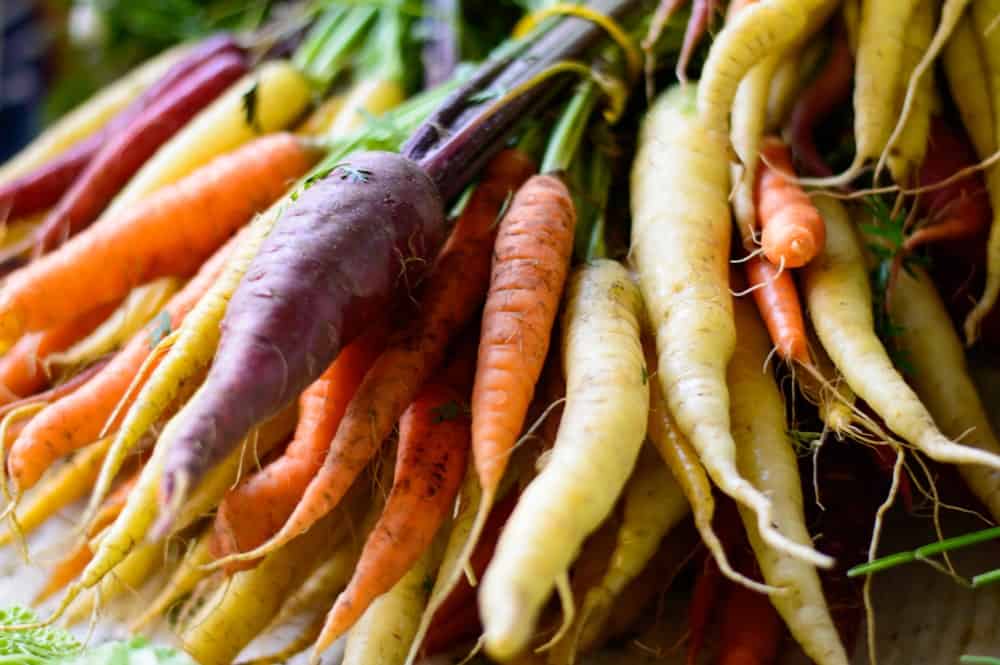
Carrots, in general, are a vitamin-rich vegetable. They are full of fiber and carotene. A little-known fact is that the carrot is actually a parsley family member. As with most vegetables, carrots should be planted during their proper season. In Northern regions, they are typically planted in the spring and in late summer in southern areas. Since the carrot is a root crop, it requires light and sandy soil to grow. It struggles to grow in compact soil and clay. In areas that do not have suitable soil, it is wise to use raised beds to grow carrots. You could try to grow carrots in heavy soil, but the result will be forked roots and deformities.
Growing Carrots
The seed of the carrot is extremely fine and difficult to spread evenly throughout the garden. It’s common to use a salt shaker to distribute it. The carrot seed is usually mixed with sand or radish seeds for distribution. Carrot seedlings take their time to germinate. You can expect your carrot seeds to take as much as 3 weeks to sprout seedlings. It’s crucial to keep the seedlings moist, and you can use a light mulch if you’re not able to check the soil every day. As the carrots develop, it is so important to make sure that weeds do not overtake your garden. This can be detrimental to a young carrot. After you sow your carrot seeds, it’s important to keep the area warm. You can use clear plastic to achieve the desired warmth.
It’s easy to believe that the carrot is one of the most well-known vegetables in the whole world. It is second only to potatoes, which might be the planet’s most well-known crop. In the days of antiquity, the carrot was a different vegetable than the one we know today. It was bitter, very small, and rather tough. This vegetable has been cultivated throughout the years to produce the iconic orange sweet carrot that we now know.
Now that you know more about carrots and how to grow them, it is time to learn the 24 different types of carrots. Let’s jump right in.
Nantes
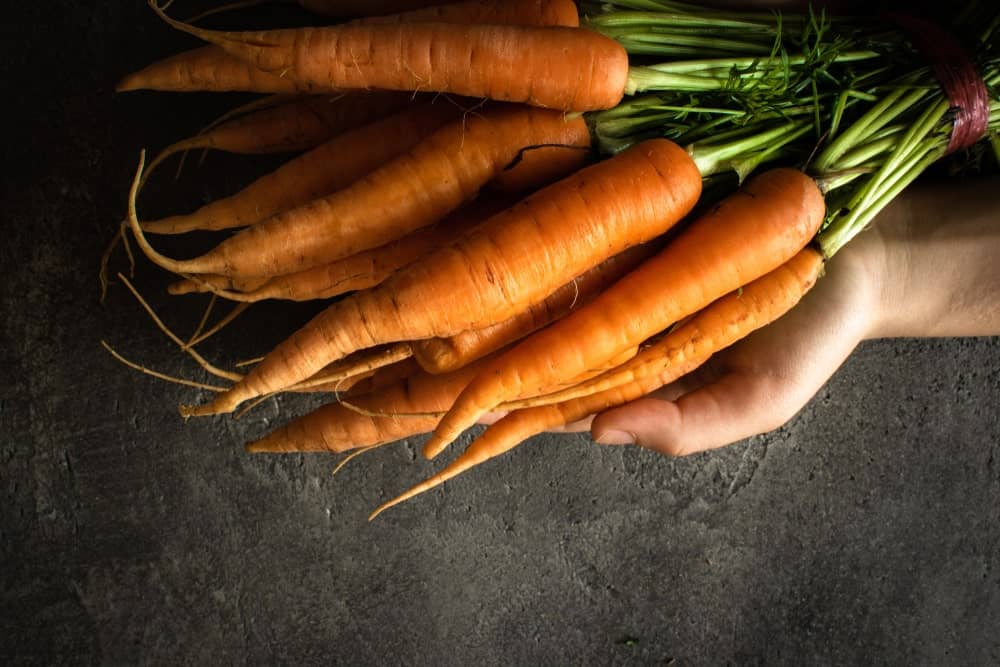
The Nantes carrot varies from an orange-red color to bright orange. It produces edible greens. Although, Nantes carrot leaves have a grassy taste. It has a fine-grain texture and a mild taste. This carrot is too delicate for commercial farmers. So, home gardeners have taken to growing it. It’s great for roasting, juicing, salads, and as an appetizer. The Nantes carrot is typically what is used to produce vegetarian hot dogs. This tender carrot is also used in carrot cake and pudding.
Scarlet
The Scarlet carrot variety grows between six and eight inches. It’s ideal for eating fresh and has a very uniform, symmetrical look. It grows in 65-75 days.
Bolero
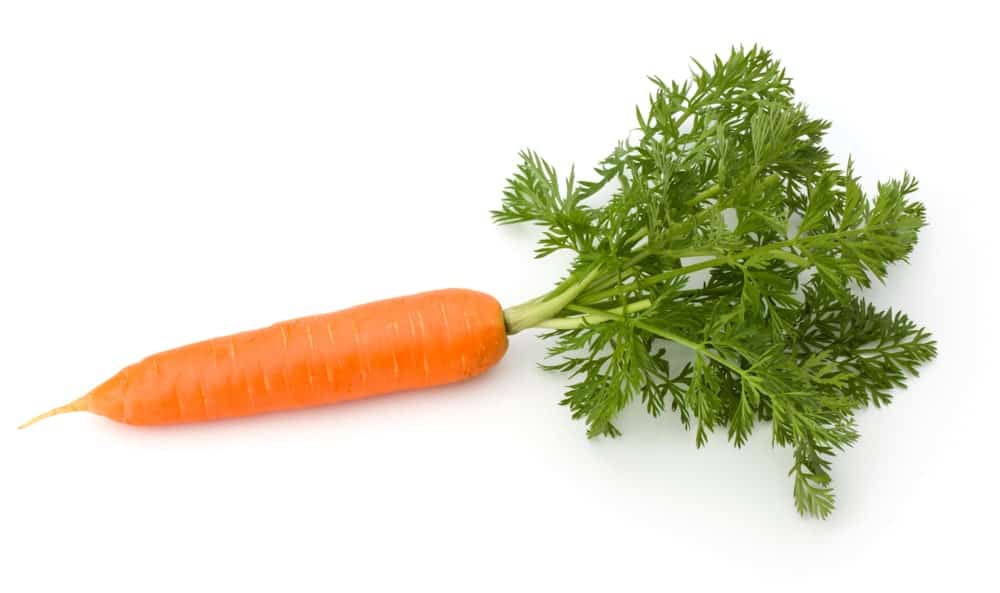
The Bolero remains sweet even while stored. This makes it a great option for canning, preserves, and other types of long-term food storage. It grows between six and seven inches. The Bolero has an even, cylindrical look. It grows in 75 days.
Nelson
This carrot variety grows in 58 days and is around six to seven inches in length. It’s sweet with a rich orange color. Unlike many carrot types, it flourishes in heavy soil.
Yaya
The Yaya is comparable to Nelson but a bit less sweet. It grows in 60 days.
Napa
The Napa carrot grows in about 63 days. The seeds produce carrots that are seven to eight inches in length. It grows well in a variety of soil types, including heavy soil. It’s crispy and sweet with a deep orange color.
Touchon
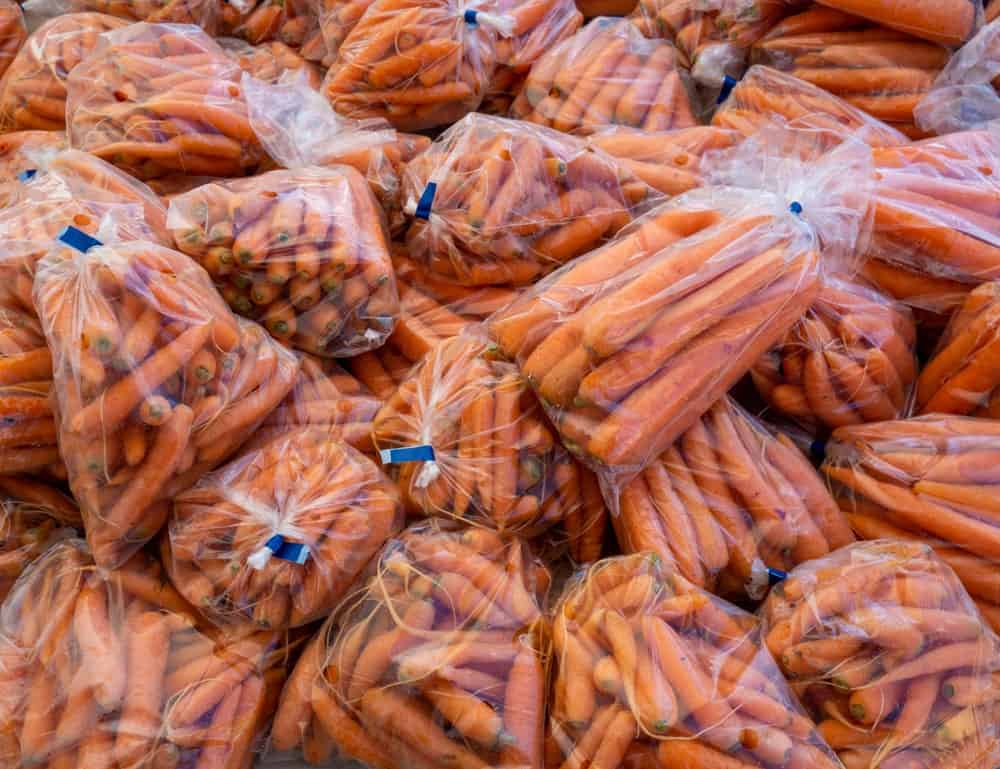
The Touchon carrot is unique. It can be harvested and enjoyed at any size.
Parano
In 65 days, the Parano carrot develops. It grows to about six or seven inches in length. It’s an ideal carrot for cooking or eating fresh in a salad. This is also a carrot of choice for juicing.
Kaleidoscope Mix
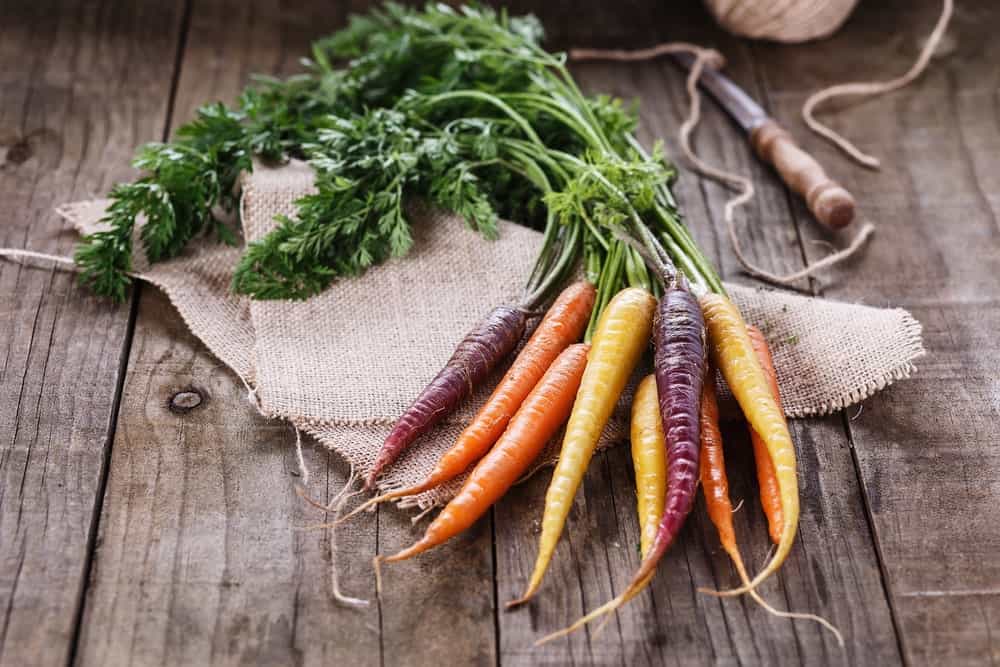
Carrots from the Kaleidoscope mix grow in 60 to 70 days. As the name indicates, this variety produces colorful carrots. You can expect purple, red, yellow, and orange tints. This is because Kaleidoscope mix seeds include Lunar White, Atomic Red, Solar Yellow, Cosmic Purple, and Bambino seeds.
White Satin
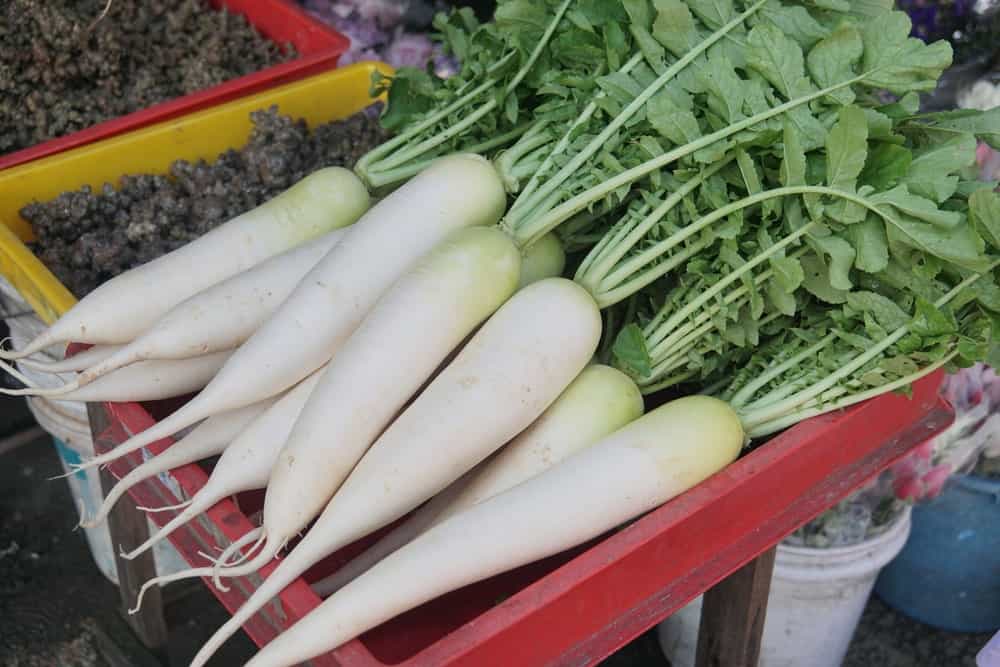
Crispy White Satin carrots grow in 70 days. You can expect carrots around eight inches long.
Merida
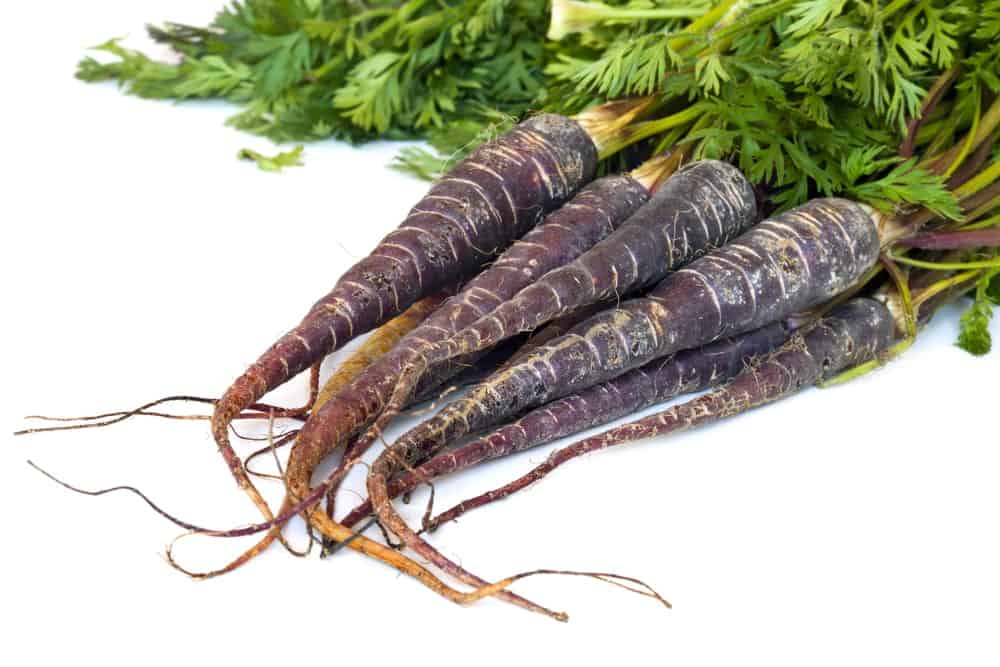
Merida carrots are used for the purpose of overwintering. They require 240 days for growth. The Merida is usually planted in September and October. It’s sweet in flavor and seven to eight inches in length.
Purple Dragon
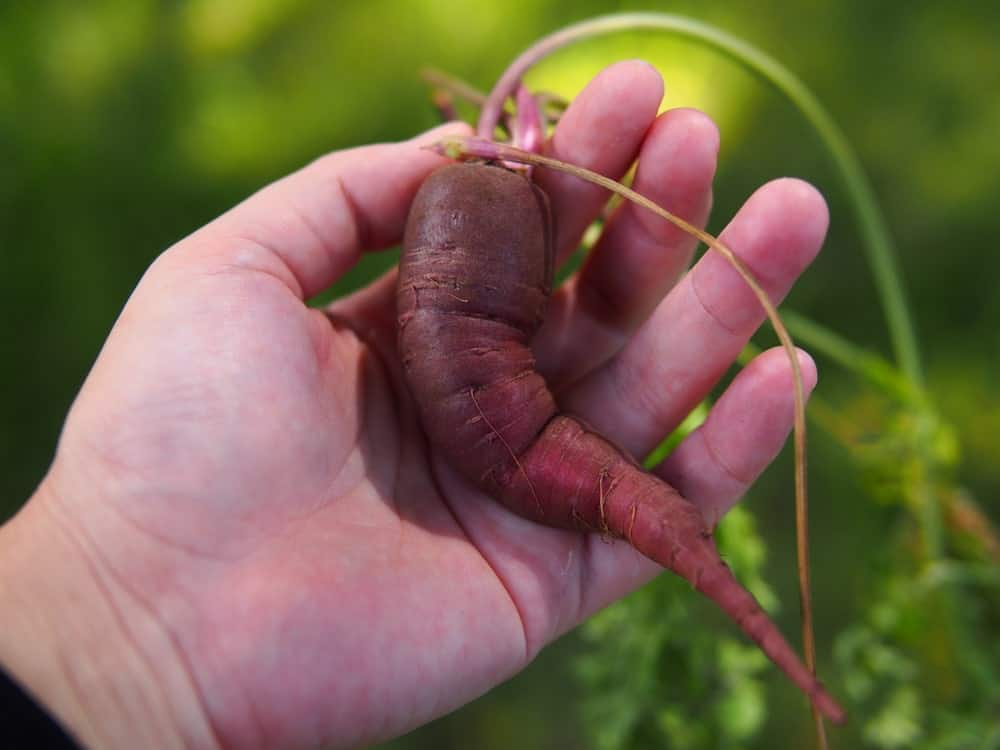
The Purple Dragon variety is dark purple on the outside with a bright orange interior core. This is a great carrot to add to cooked dishes because it’s rich in phytochemicals. However, the color tends to pale during cooking. The Purple Dragon needs 70 days of growth. It gets up to ten inches in length.
Cosmic Purple
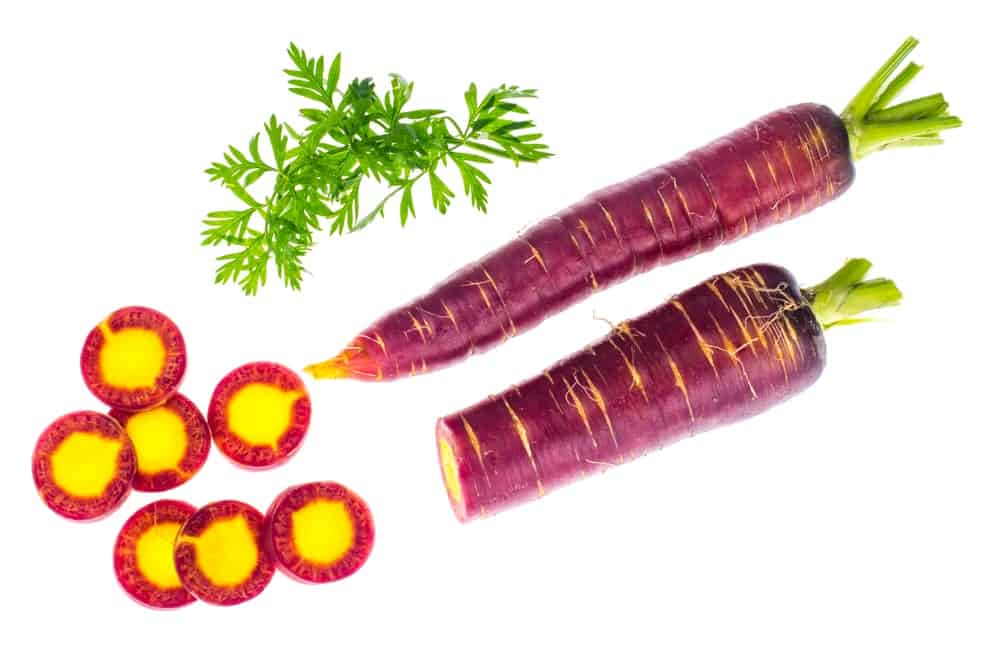
These carrots are violet on the outside with a bright orange interior. The color holds while cooking this carrot.
Imperator
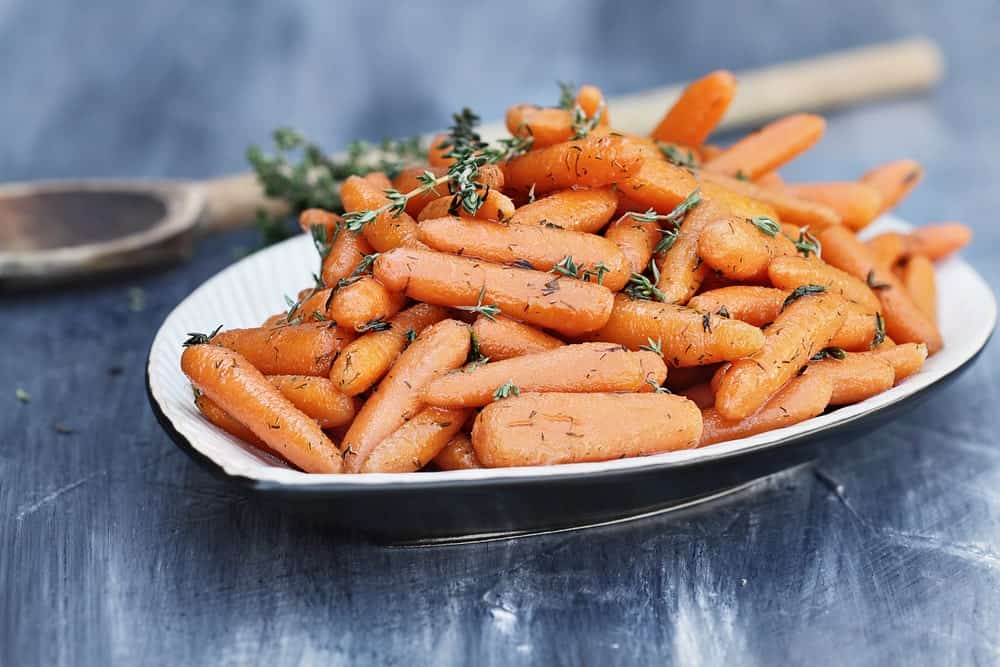
The Imperator carrots are the long, slender, tapered carrots many people are used to seeing. It’s one of the most commonly bought carrots in North America. Oftentimes, the carrots marketed as baby carrots are Imperator carrots.
Autumn King
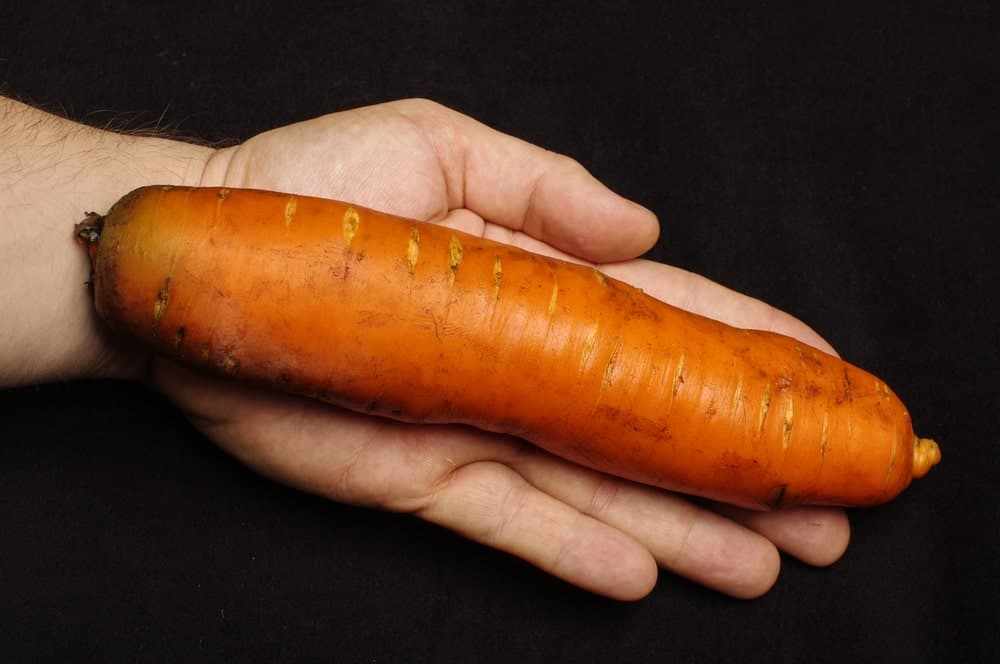
The Imperator is the typical long carrot that you see in the grocery store. It grows in fine soil or sandy loam. The Autumn King Imperator grows up to a foot in length in 70 days. It’s known as a reliable variety that gardeners can depend on. The Autumn King carrot is the result of crossing the Chantenay and Nantes varieties in 1928. Associated Seed Growers developed this popular carrot. It’s wide-shouldered and grows a long taproot that’s unaffected by clay and stones. The Autumn King is exceedingly hardy and tolerant to the cold. It’s often found in English gardens during the winter and fall. It reaches about 9 inches in length. One recipe calls for this carrot as the main ingredient-autumn carrot & sweet potato soup.
Atomic Red
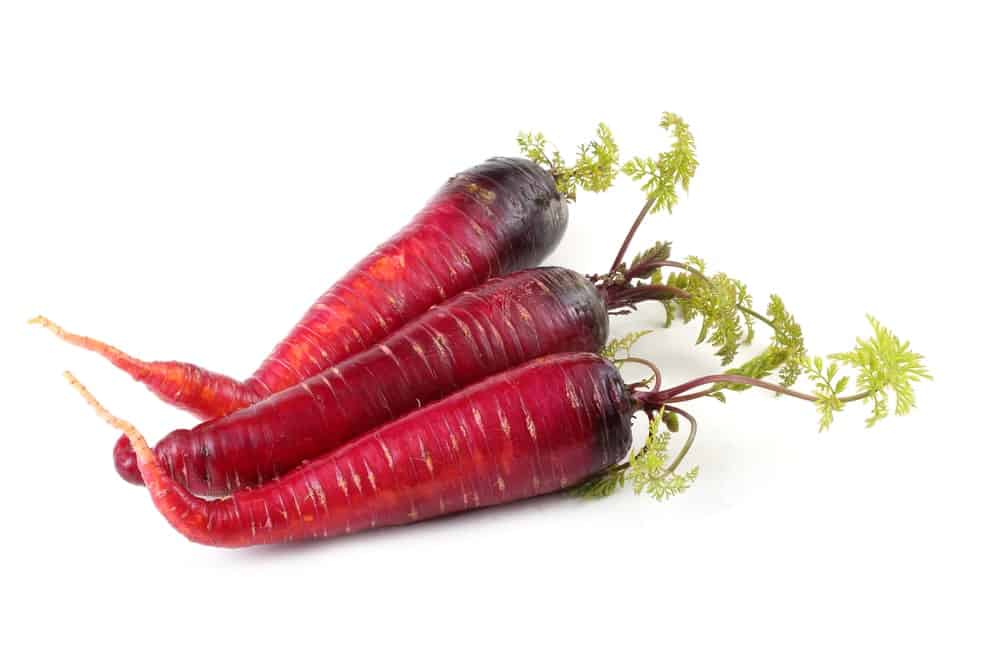
This is another carrot for cooked recipes. It retains its bright orange color after cooking. This slim Imperator carrot grows to 11 inches in 65-75 days. The Atomic Red carrot is high in lycopene, which is found in tomatoes. This variety has a stand-out feature when cooked. It produces an intense color after cooking; the red color darkens. It’s used in gourmet dishes and salads. The Atomic Red carrot is often roasted, stir-fried, or steamed.
It’s a favorite for home gardeners because of its vivacious color and nutrient richness. It grows lengthy, tapered roots in full sun. It’s planted in the spring. It should be harvested prior to reaching its optimal size for maximum flavor. You don’t have to worry about canning or preserving this carrot; it’s very simple to store. Atomic Red carrots can remain in the ground for storage.
There are many types of Imperator carrots other than the popular two above:
- A-Plus
- Bejo
- Artist
- Apache
- Blaze
- Choctaw
- Convert
- Carobest
- Eagle
- Crusader
- Imperator 58
- Estelle
- Heritage
- Nogales
- First Class
- Spartan Premium 80
- Orangette
- Prospector
- Sweetness
- Orlando Gold
- Sunrise
Chantenay
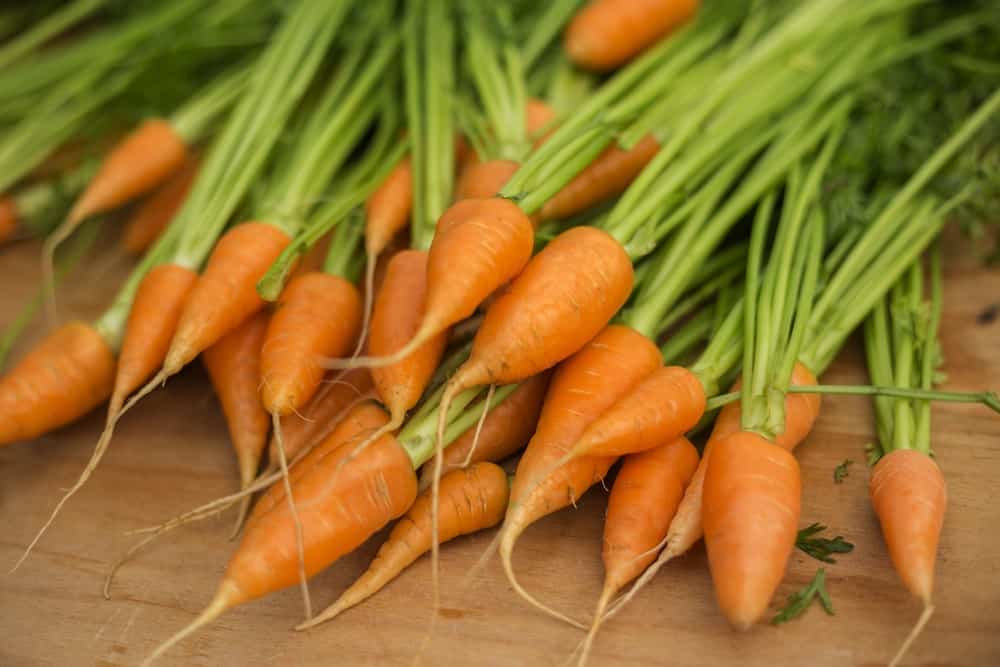
Chantenay carrots are short, stubby little carrots. As the name indicates, this plant gets its name from the Chantenay region of France. They grow between six and seven inches long and have a rounded tip that comes to a point. They grow in rocky soil and need to be harvested in a timely manner. The core gets woody the longer the Chantenay carrot sits in the ground.
Therefore, it’s important to harvest the Chantenay carrot on time for the sake of taste. This stubby carrot bluntly tapers to a point. It grows well in loose and sandy soil. Chantenay carrots arguably have the most recipes dedicated to them. In general, these carrots reach maturity within 79 days. It’s wide-shouldered and produces heavy yields. With the Chantenay, you can make a variety of dishes.
Here are a few dishes specific to this variety:
- Buttered Chantenay carrots
- Sweet roasted Chantenay carrots
- Garlic and thyme glazed carrots
- Vichy-style carrots
- Honey mustard glazed carrots
- Maple balsamic roasted carrots
Hercules
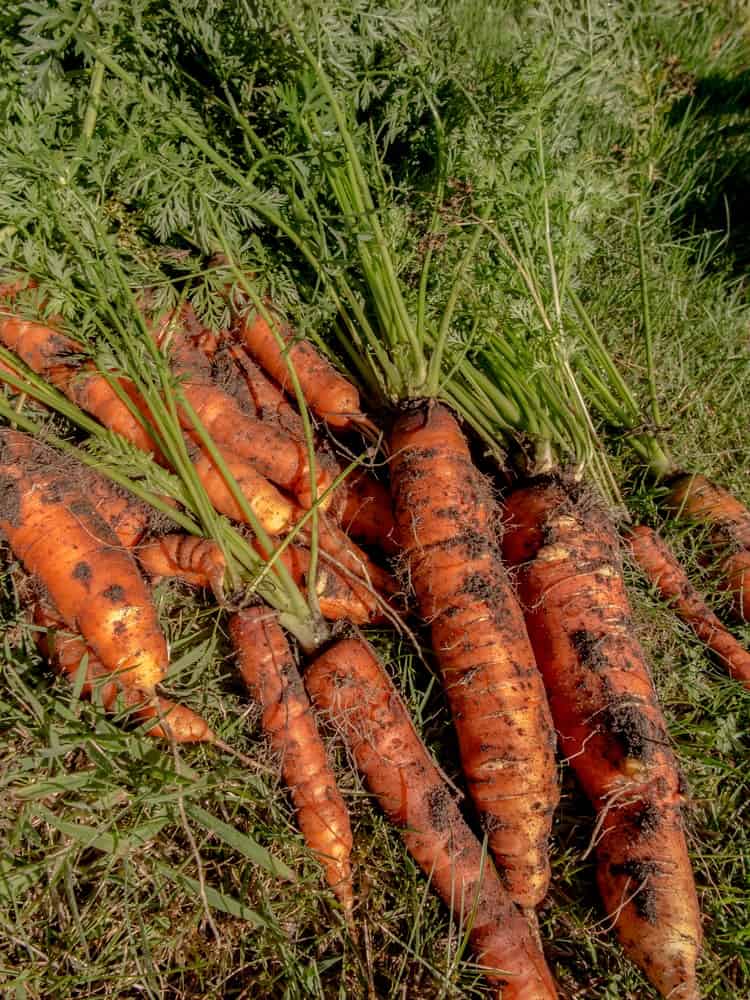
Where other carrot varieties fail to grow, the Hercules variety thrives. It can grow well in clay soils in which most carrots struggle to survive. This is a perfect carrot choice for someone gardening in soil that’s less than ideal.
Red Cored Chantenay
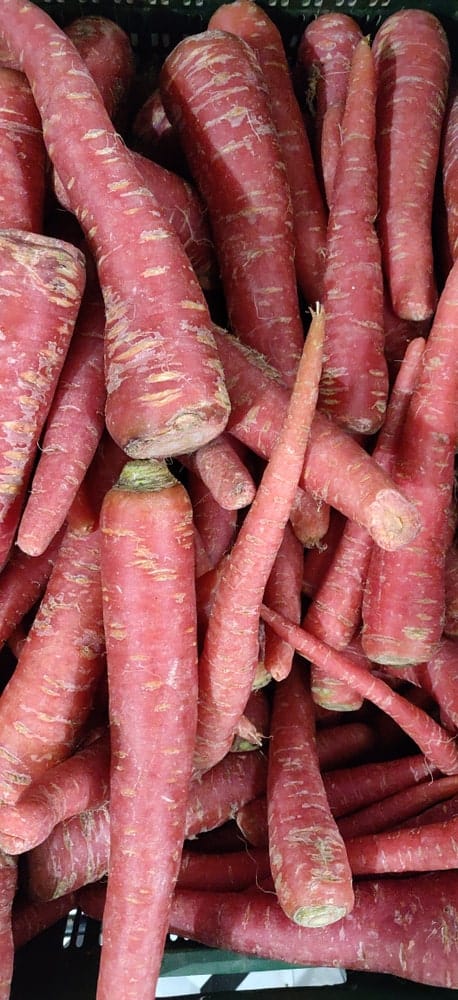
The Red Cored Chantenay grows in 60 to 70 days and remains sweet during storage. This type is a colorful addition to salads or cooked dishes. If the Red Cored Chantenay isn’t sweet enough for your taste buds while fresh, there’s a simple solution. Increase the sweetness by storing it for an extended period. You can expect large yields from this sturdy plant. The Red Cored variety is an heirloom originating from France between 1830-1879. It’s a very dense carrot with a full, complex flavor.
Kuroda
This Chantenay carrot is produced in large volumes. It’s a good choice for juicing. It matures in about 79 days. The Kuroda was created to grow in sub-tropical areas and harvest in the fall. It’s very tolerant of high heat and blight on leaves. Blight is a plant disease typically found in Western Australia carrot crops.
Mini Carrots or Radish style carrots
Mini carrots are known to grow well in shallow containers. They simply require enough water and space to grow properly. You can plant them about a quarter of an inch deep in the soil, at least an inch apart. Mini carrots might be the best kind to grow because they provide instant gratification.
They grow so quickly, and you can eat them for snacks or add them to hearty stews. You should grow mini carrots in loose or loamy soil and avoid the use of traditional garden soil. Traditional soil is a little too compact, which can make growing carrots a failure. As you may be aware, certain plants grow very well next to each other. Feel free to plant radishes next to your mini carrots to encourage their growth.
Romeo
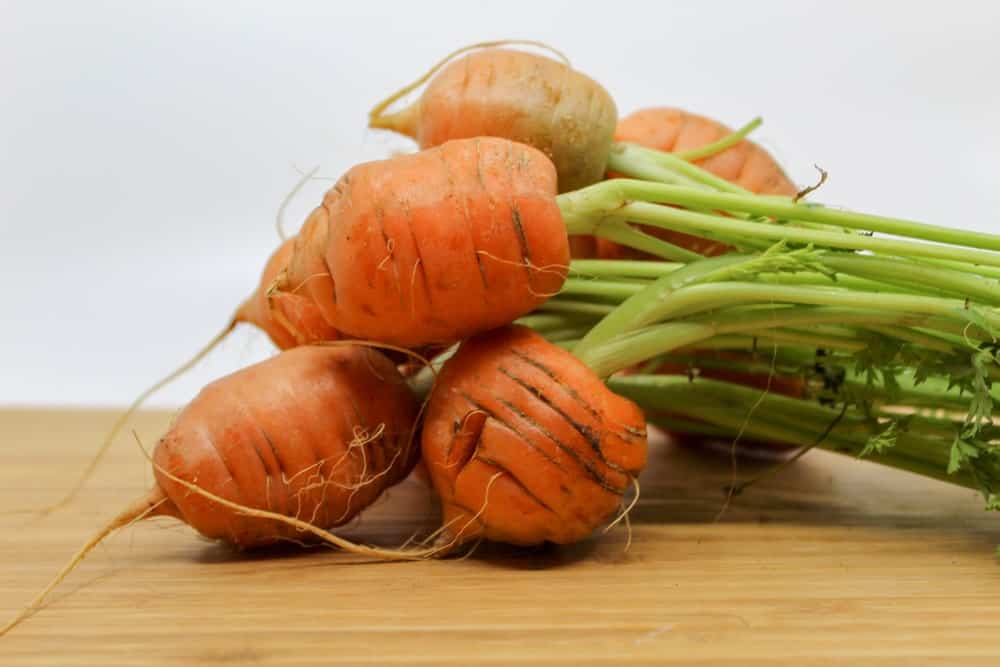
Romeo carrots are a type of baby carrots that resemble a radish in shape and size. These carrots grow between 1 and 2 inches and are spherical. Because of this, they’re often cut into circular slices like radishes. Romeo carrots are actual baby carrots-their size will never amount to more than a couple of inches. Whereas a lot of the baby carrots sold in stores are actually full-size carrots that have been cut down to size. Romeo is a baseball-shaped carrot that can be grown very easily. It adds a punch of flavor to your meals. There’s no need to peel the Romeo carrot to enjoy its delightful flavor. Romeo carrots should perform well for the newbie home gardener.
Babette
The Babette carrot is another authentic baby carrot. They’re blunt-tipped, cylindrical, and smooth. The Babette is a slightly larger type of baby carrot growing between 3 and 4 inches. Most people eat this type of carrot raw or cook it very quickly. This one is also called the French baby carrot. Ironically, it can be found in many American gardens. It’s very crunchy and sweet with fine flesh. The Babette is considered a top-quality, full-flavored carrot. It’s ready for harvest in 70 days. You can find Babette carrot seeds here.
Exhibition and Show Carrots
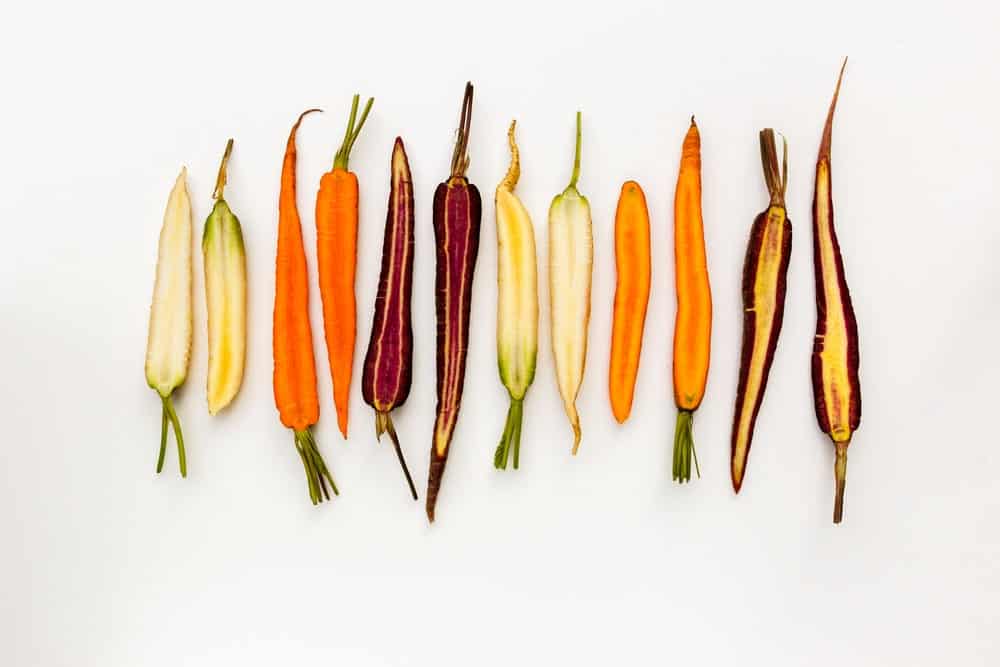
Exhibition carrots grow to immensely large sizes. These carrots are top quality; they are completely uniform and blemish-free. Of course, the most important feature of a show carrot is its size. Not all carrots are capable of growing to vast sizes to be eligible for shows. So, gardeners have to choose their carrot varieties carefully if they plan to win a prize. Growers that produce champion carrots keep their secrets closely guarded.
Champion growers tend to have their own special mix. An example of a mixture would be peat moss, loam, calcified seaweed, potash, and silver sand. There are particular sowing dates that you need to adhere to if you want to produce giant carrots. If the show is at the end of July, then you want to sow during the first week of March. If the show is in August, you want to sow in April.
Exhibition and Show Carrots – Tips
Cultivating very long carrots requires care. The plants will need to be protected from carrot root fly and willow aphids. To do this, gardeners place an environmental mesh cage around the carrots. The carrots grow inside drums surrounded by bubble wrap to increase the sand temperature to the ideal range. It’s necessary to grow large carrots in a container that can withstand long roots, such as a barrel or raised bed.
Oversized carrots are grown inside of damp sand. First, you have to bore a hole through the sand to create a core. This can be achieved by pushing the drain pipe through the sand and then lifting it out to leave a borehole. The borehole is then filled with a special mixture mentioned previously. Once the borehole is filled with a mixture, it should be watered and left to settle. When the appropriate time rolls around, you want to sow six seeds in each borehole and cover them with a quarter-inch of compost.
Then cover the entire drum with polythene or horticultural fleece. Three types of exhibition carrots are the Zino, Red Giant, and Flakee. The Zino is tasty and flavorful. The Flakee exhibition carrot is a long carrot with roots growing to 50 cm. Red Giants range from purple-red to pink-red. The Red Giant has more lycopene and lutein than orange carrots.
Heirloom Carrots
Golden Ball
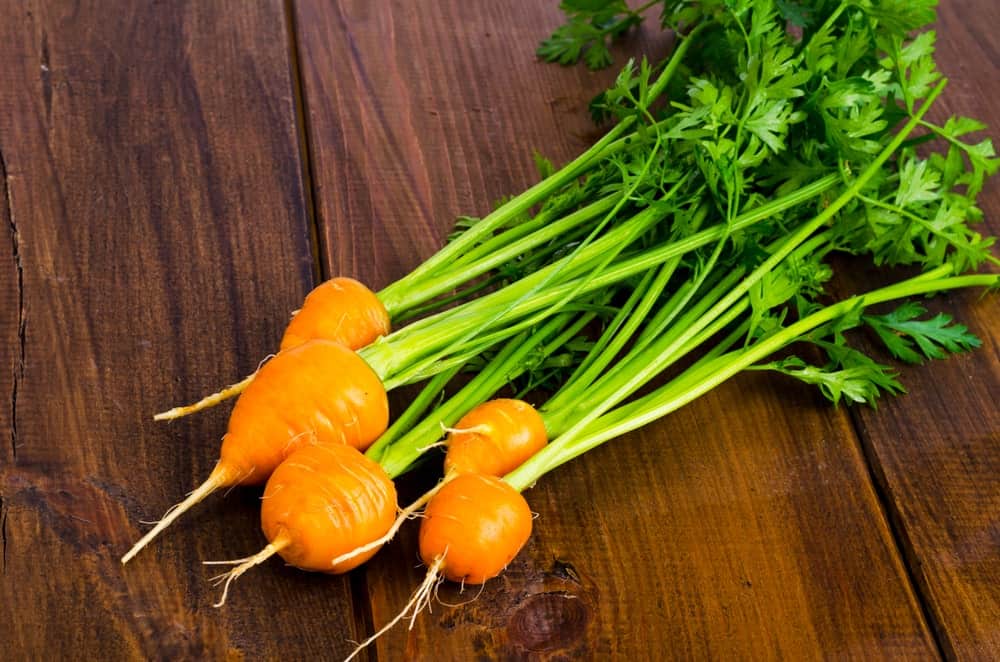
The Golden Ball can be grown on heavy ground and grows quickly. It has traditionally been used in food presentations as a garnish. This carrot originally appeared in the early 1900s. If this carrot is planted at the wrong time during spring, it will begin to split. It’s a delicate carrot making it more appropriate for dishes that are raw or salads rather than cooked dishes. It is also known as Parisian Rondo per some restaurant menus. The Golden Ball carrot will overwinter as long as it is protected properly.
Oxheart/Guerande
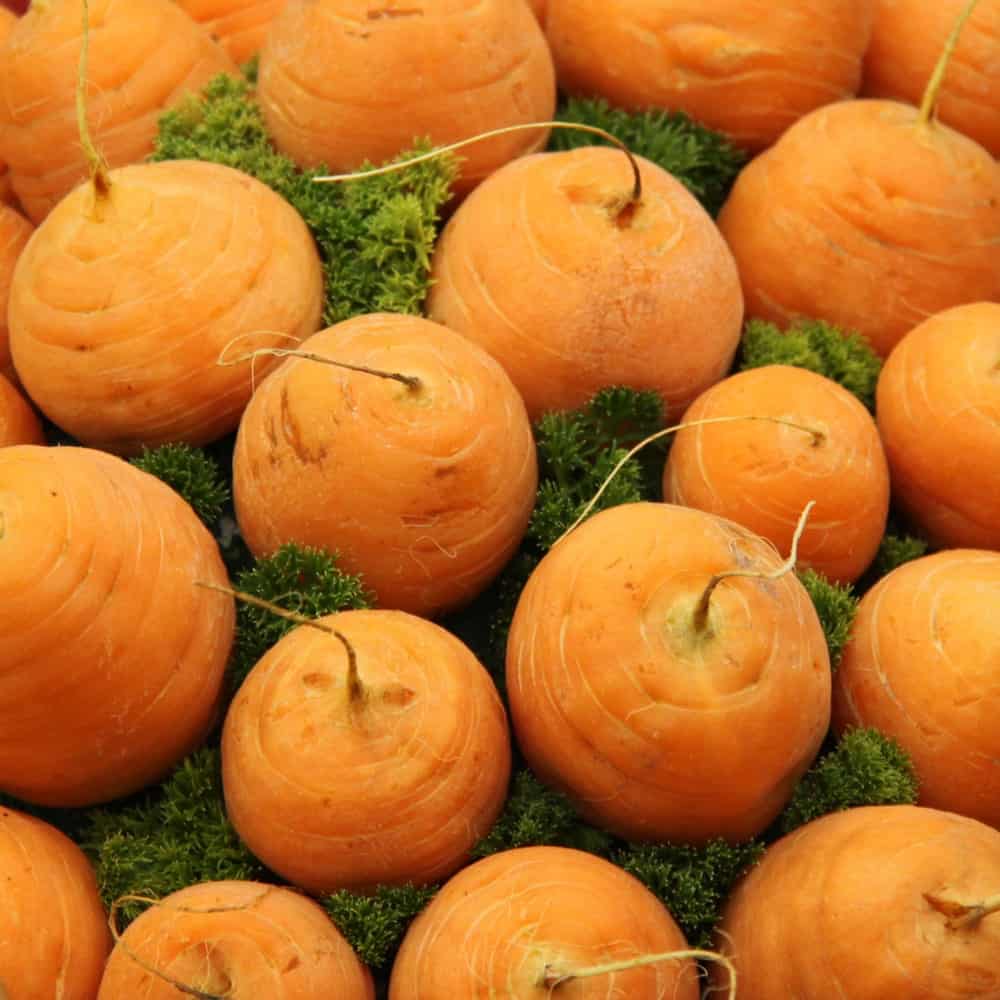
This French Nantes variety originates from the 1870s and grows to about 6 inches. It can weigh as much as a pound in its fully matured state. The Oxheart carrot is known to split in cold weather and grow into strange shapes. It cannot be overwintered on freezing grounds.
Danvers
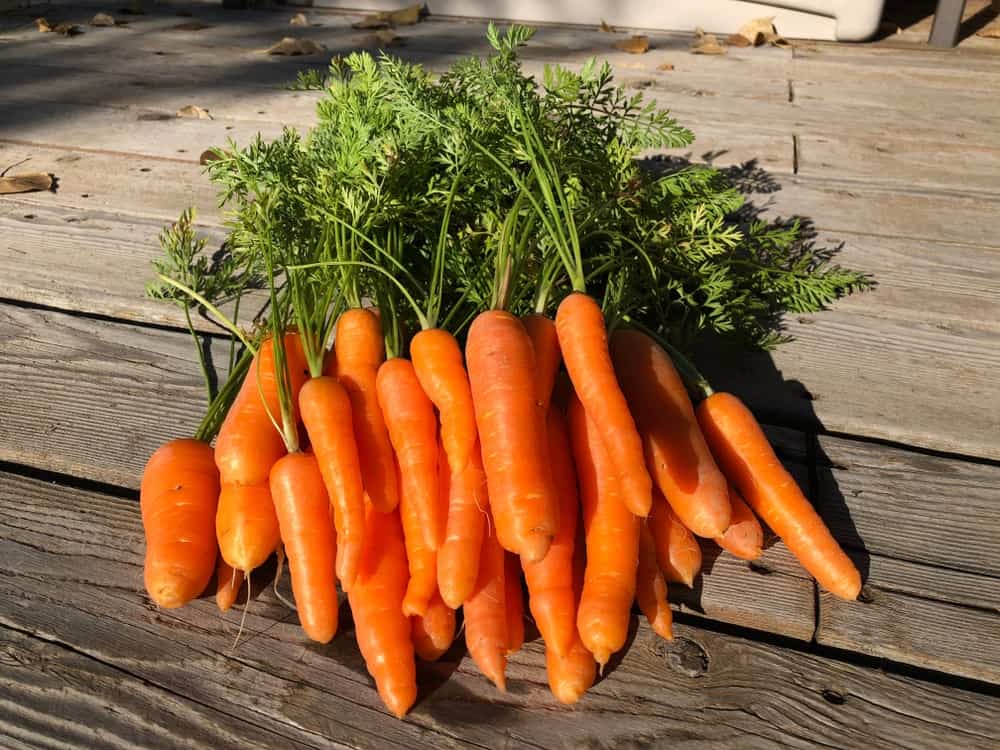
This carrot was developed in Connecticut during the 19th century. True Danvers is the carrot of choice used to enhance the productivity of onion farmers. It grows well in the soils of New England and is a choice pick for American gardeners.
St. Valery
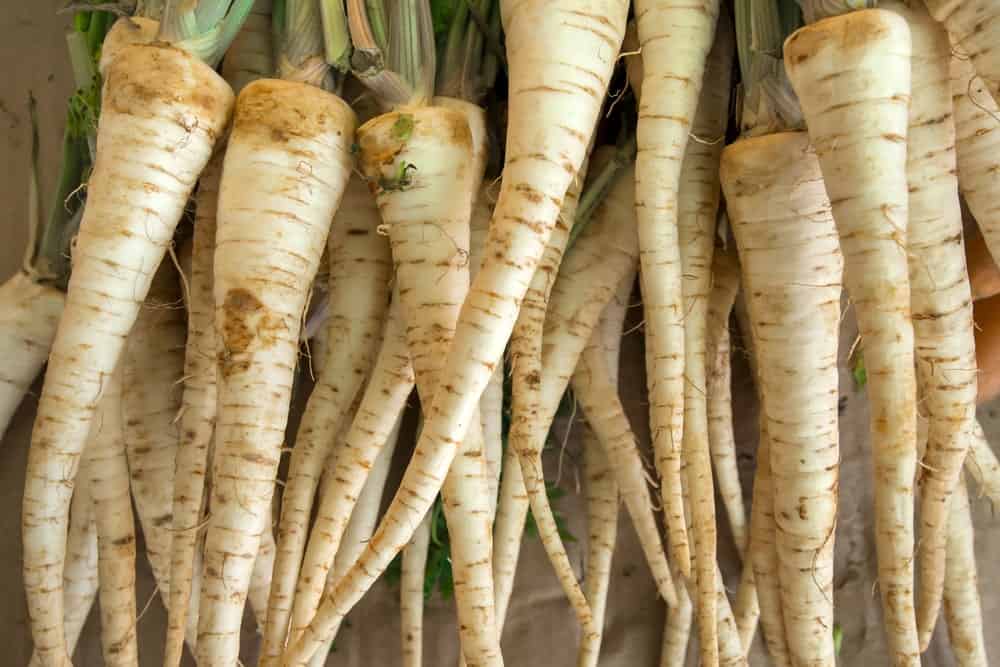
This carrot is also known as the Long Red Surrey. Most gardeners deem this carrot worthy of growing because it originates from the 18th century.
White Belgian
The White Belgian carrot was originally found by Henry Vilmorin. He found wild carrots along the Belgian coast and spent four years selecting these seeds. In the end, he cultivated a fleshy large white carrot with a tender texture. What Vilmorin did with the White Belgian carrot serves as an example of the selective improvements that can be made to wild plants.
FAQs
Where do carrot seeds come from?
Carrot seeds come from the flowers that the carrot plant produces in its second year of growth. The carrot flowers have five petals and are born in clusters called compound umbels.
What does a carrot sprout look like?
When carrot seeds germinate, they produce slender and delicate green shoots called sprouts. These sprouts have two tiny seed leaves called cotyledons, which eventually develop into the fern-like foliage characteristic of carrot plants.
How long do baby carrots last in the fridge?
To extend their shelf life, store baby carrots in a sealed plastic bag in the crisper drawer of your fridge. They should remain fresh and crisp for up to 2-3 weeks when stored properly.
Are carrots Paleo?
Yes, carrots are approved for the Paleo diet.
Do carrots flower?
Carrots are biennial plants, which means they flower in their second year of growth. During their first year, the plants focus on growing their edible roots. In the second year, if left unharvested, carrots will produce flowers and, eventually seeds.
